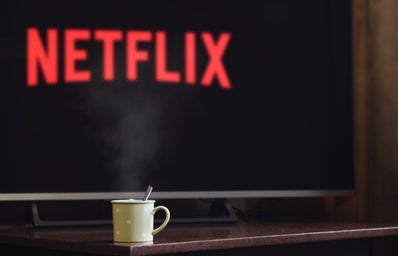Shoulderpads, a killer 80s soundtrack, extramarital affairs, an up-close look at Britain’s first female, Reagan-era, prime minister, the everso mysterious royals and, of course, the absolutely iconic Princess Diana—look no further than season four of Netflix’s The Crown.
Peter Morgan’s fictionalized masterpiece (based on true events and people) finally hit its stride this season (dare I suggest it might be the best of the entire series, even though it’s renewed for two more?).
Don’t get me wrong; The Crown was always an incredible watch with its compelling stories, writing, period pieces, color palettes, soundtrack and outstanding cast (featuring the likes of stars like Helena Boham-Carter and Claire Foy). Yet, the arrival of two of arguably the most famous women in Britain’s long history—Princess Diana and Margaret Thatcher—made this season emphatically thrilling.
Americans, like much of the world, have always had a fascination with Britain’s royal family. Maybe it’s because the closest thing we’ve had to a royal family is the Kennedy’s (their era in the White House is often referred to as the “Camelot” era). Maybe it’s because it’s an intriguing, Princess Diaries, become royalty overnight, idea to imagine. Or maybe it’s just because we love a good story—one filled with politics, fashion, rivalries and drama.
Whatever it may be, an estimated 73 million Americans have streamed The Crown since 2016 with this season expected to amplify those numbers as the show moves more into mainstream pop culture references.
So what are these new references and can’t-help-but-look storylines?
Well, for one, Gillian Anderson shines in her scarily accurate portrayal of Margaret Thatcher, known throughout her time as Britain’s prime minister as the “iron lady.”
The series grapples with England experiencing unprecedented circumstances of not only one but two women leading the country—Queen Elizabeth II as head of state and Thatcher as prime minister. Yet, while the two are women who care deeply about their country, the series also highlights how they often clashed, with Queen Elizabeth even doing the unheard of in royal history and expressing her distaste for the prime minister after Thatcher refused to do more about apartheid.
The show further offers an exploration of the dichotomy that, while Thatcher was the first female prime minister of Britain, she was in no way an advocate for women. The show touches upon Thatcher’s internalized misogyny, including an early position that Thatcher believes women should not be in her cabinet, or in any high leadership positions for that matter, because they are “too emotional.” One episode touches on Thatcher’s twin children, in which she states without hesitation that her son is by far her favorite child. Her daughter, Carol, in return, begs for Thatcher’s relationship with her mother not to affect her relationship with other women.
Plus, we have the long-awaited arrival of Princess Diana, played by the incredibly talented Emma Corrin, who captures the charm and musicality Diana so effortlessly brought to real life. Whether it is her eye-catching fashion, her wit, the way she could convey so many things with simply the flutter of her eyes and an innocent melody that followed her throughout the series, Diana simply shined this season.
We get a raw look at what it all must have felt like for Diana. Not the Diana the world knows, adores and sees as a princess of the people, but as a victim. A victim of exploitation for classist, traditional, inherently misogynistic means that left her struggling through a harrowing depression and eating disorder.
Her innocence is specifically highlighted as she roller skates around Buckingham Palace with a walkman in hand listening to Duran Duran, or as she jumps around in glee with her friends once it’s confirmed she’ll be marrying Prince Charles to the absolutely empowering “Edge of Seventeen” by Stevie Nicks.
Princess Diana deserved better. She deserved better than a toxic marriage with a man who was always in love with another woman from the start of it. Princess Diana deserved better than being chastised for some of the moments that made the world love her the most. Whether it was dancing in front of a crowd or hugging a child with AIDS when the disease was taboo at the time, Princess Diana revolutionized what it means to live with your heart on your sleeve and change the conversation. She was a symbol of focusing on the world’s hopes and dreams rather than its fears and cynicism.
Yet, the series portrays how Charles, and almost all of the royals, were victims too. Stuck within the constraints and confines of tradition and expectations, most of them were trying not to drown under the burdens of incredibly unhappy marriages and anvil-like pressures. Queen Elizabeth, as the series highlights, is the glue that literally keeps the family from falling apart.
While the series is fictionalized, it does not fail in offering a few history lessons too.
The violent conflict between Ireland trying to assert its independence from Britain, as *SPOILER ALERT* Lord Mountbatten’s tragic assassination is highlighted in one episode, claimed by the Irish Republican Army. The unprecedented break-ins by an ordinary man (Michael Fagan) into Buckingham Palace not only once, but twice! South Africa residing under Britain, and what that meant for a country struggling through apartheid and racial conflict. The season also explores the prime minister’s son going missing during a car expedition, Prince Charles almost being killed under an avalanche and Margaret Thatcher’s historic oust from office.
Morgan walks a fine line of providing a thrilling account of history while fictionalizing with the means of creating a compelling, 10 episode ride of a season.
Yet, the show delivers in every way.
As for basking in what it would be like to be a royal for 10 straight hours, I’ll take that over 2020, any day.



